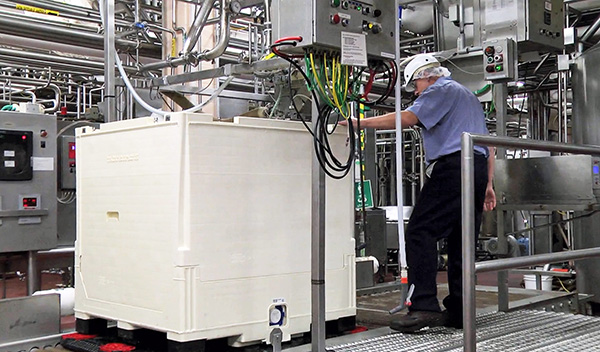As food manufacturers face a busy holiday season, here’s how a pooled container system can help.
By Frank Bozzo, Vice President and General Manager, CHEP Canada & Pallecon North America
According to insights from Nielsen-Massey Vanillas, more than half (59%) of millennials bake over the holiday season to connect and spend time with their loved ones. This means in the months leading up to winter holidays, food manufacturers must ramp up production for peak seasonal demand.
To manage these seasonality changes and ensure consumers’ tables are set for the holidays, food manufacturers can leverage a pooled container system and reap rewards such as reliable packaging availability and more sustainable processes. Here are the top three benefits to consider.
As demand for oils, fruit fillings and dairy increases for baking season, so does the need for containers to transport the product. And food manufacturers can take a few routes to fill this gap.
First, they could purchase containers outright. While this fills the container demand, it involves a significant up-front investment and leaves the potential for those containers to sit unused in slower production months, taking up valuable warehouse space. Wasted real estate is growing in importance as big-box industrial facility rents continue to increase, rising to annual rates of $8.08 per square foot, a 15.9% increase from 2023, according to CBRE.
Another option is purchasing single-use containers. While this choice eliminates idle containers in the off-season, it increases packaging waste and the labor needed to set up and dispose of the containers after one use.
The third and recommended option is to leverage a pooled system. This approach ensures container availability while avoiding capex spend and enables manufacturers to adjust container usage as food production ebbs and flows throughout the year. This method also has financial and environmental benefits.

Beyond availability and keeping warehouse space clear when not needed, leveraging a reusable model can significantly reduce labor costs. This is especially important during peak season as food manufacturers face increased costs from escalated production needs.
Picture this: it’s time to get a shipment of fruit filling on the road. Loading the fruit filling in single-use packaging like cardboard totes requires a pallet and strapping to secure the containers for transport. However, when using pooled reusable liquid intermediate bulk containers (IBCs), the container can be packed with fruit filling and go directly on the truck, eliminating the extra set-up time and reducing the labor needed to fill the order. Recent CHEP time studies reveal that up to 14 minutes in set-up time can be saved per container when switching to reusable solutions.
Another way to identify cost-saving opportunities is by partnering with a strategic and knowledgeable provider. For example, if working with a thick liquid that tends to be difficult to decant completely, a consultative provider may suggest a bottom-decanting container and a specialized liner to reduce residual product and its respective costs. Better yet, a leading pooled IBC provider will also handle the cleaning and transport of containers, so food manufacturers can reduce their administrative efforts while benefiting from a circular system. In other words, choosing the right partner may lead to additional savings.
As production demand increases during peak season, so does the environmental impact of that production. By using a pooled, circular system, companies can offset their increased carbon footprint and elevate their sustainability initiatives. In fact, according to the Reusable Packaging Association, the long life of a single reusable packaging item eliminates hundreds of single-use packaging items from entering landfills, reducing solid waste by up to 86%. Further, reusable packaging eliminates the need to recycle or remanufacture single-use packaging, reducing CO2 (greenhouse gas) emissions by up to 60%.
Circular systems also generate environmental savings during the reverse logistics process. By working with a pooled provider, manufacturers have access to their network. Instead of hauling the containers back to their starting place, manufacturers can rely on their provider to return the containers to the nearest service center, saving time, resources and environmental impact.
While the busy season is certainly challenging for food manufacturers, using a pooled container system can help them gain peace of mind in selecting the most cost-effective and sustainable methods for their heightened needs. Overall, choosing the right container program and provider is key to succeeding during high demand and all the times in between.

About the Author:
Frank joined Brambles in 2003 and was promoted to Vice President and Country General Manager, CHEP Canada in 2020. In 2022 he assumed responsibility for the Pallecon North America business. He began his career with the company as Manager of Sales for the Canadian business, and was promoted to National Director in 2012. Frank was promoted to Senior Director, Sales and Customer Service, in 2017, and held that position until his promotion to his current role as the Canadian leader and member of the Americas Executive Leadership Team role which he currently maintains today.
Scott Ellyson, CEO of East West Manufacturing, brings decades of global manufacturing and supply chain leadership to the conversation. In this episode, he shares practical insights on scaling operations, navigating complexity, and building resilient manufacturing networks in an increasingly connected world.